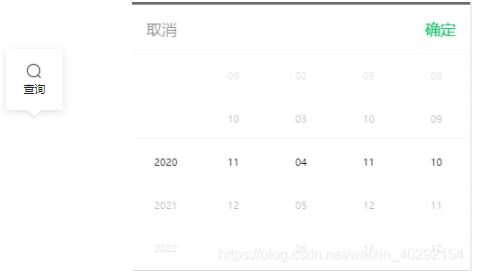目录
- 父传子:
- 1、 在父组件的子组件标签上通过 :传递到子组件的数据名=”需要传递的数据”
- 2、子组件依旧通过 props 来接收并且在模版中使用
- 子传父:
- 总结
父传子:
1、 在父组件的子组件标签上通过 :传递到子组件的数据名=”需要传递的数据”
在这里为了大家区分我将父组件中的数据定义为 : fatherData ,
子组件需要接收的数据定义为: sonData 。
// 父组件
<template>
<div class="about">
{{fatherData}}
<!-- 父传子 -->
<!-- 1、 在父组件的子组件标签上通过 :传递到子组件的数据名="需要传递的数据" -->
<children :sonData="fatherData"></children>
</div>
</template>
<script>
import children from "@/components/children"
import { defineComponent,reactive,toRefs } from "vue";
export default defineComponent({
components:{
children,
},
name:"about",
setup(){
const state = reactive({
fatherData:"hello"
})
return {
...toRefs(state)
}
}
})
</script>
2、子组件依旧通过 props 来接收并且在模版中使用
那么大多数情况下都会去通过父组件传递到子组件中的数据,根据这个数据去做一些特定的功能或者请求数据等等。
在 setup 钩子中第一个参数 props 就可以访问到父组件传递的数据,那么在函数中也是通过: props.父组件传递数据的名称 来操作该数据。
setup函数接收props作为其第一个参数,props对象是响应式的(单向的父—>子),watchEffect或watch会观察和响应props的更新。不要对props对象进行解构,那样会失去响应性。在开发过程中,props对象对用户空间代码时不可变的,用户尝试修改props时会触发警告。
// 子组件
<template>
<div class="children">
<!-- 3、在子组件模版中使用 -->
{{sonData}}
</div>
</template>
<script>
export default {
name:"Children",
// 2、子组件通过 props 来接收
props:["sonData"],
setup(props){
function childrenbut(){
// props.sonData 可以访问到父组件传递的数据
console.log(props.sonData);
}
return {
childrenbut
}
}
}
</script>
子传父:
1、子组件触发事件通过 setup 的第二个参数 context.emit 来实现子传父
context 上下文对象。
// 子组件
<template>
<div class="children">
{{sonData}}
<!-- 1、触发事件 -->
<button @click="childrenbut">子组件按钮</button>
</div>
</template>
<script>
export default {
name:"Children",
setup(props,context){
function childrenbut(){
console.log(context);
// 2、通过context.emit 实现子传父
// 第一个参数为 方法名,第二个参数为 需要传递的数据
context.emit("change",'world')
}
return {
childrenbut,
}
}
}
</script>
context 也可以使用结构的形式这样写
// 子组件
<script>
export default {
name:"Children",
// 通过结构 之后直接写 emit {emit}
setup(props,{emit}){
function childrenbut(){
// 省去 context.emit
emit("change",'world')
}
return {
childrenbut,
}
}
}
</script>
总结
在 vue3 中无论是父传子还是子传父其实与 vue2 中都相差无几,
思想大多一样,不一样的是 vue3 需要通过调用各种各样的钩子来实现传参











